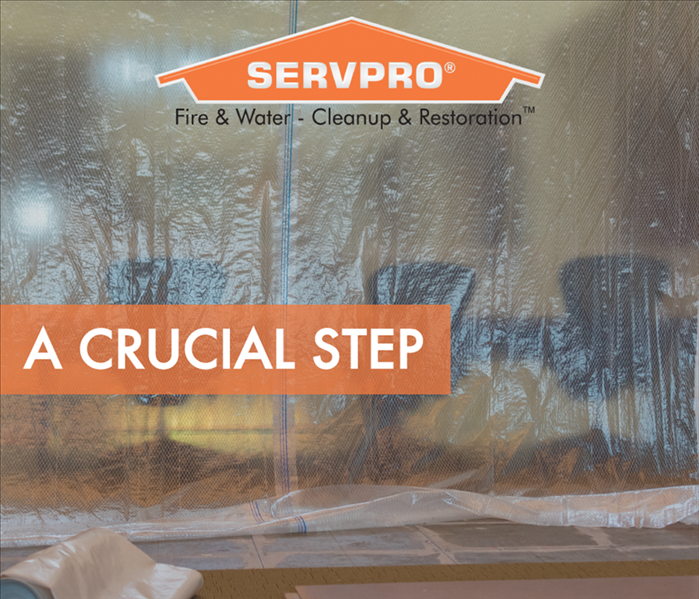What To Know About Mold Containment
3/29/2020 (Permalink)
Here Are Some Things You May Wish To Know
When your home faces mold contamination in Cary, NC, you may see the mold restoration team working on the space initiate some containment procedures. This is done to both prevent further mold spreading, and protect your home. Here are some things you may wish to know.
1. Why Containment is Important
Containment is done to help prevent the spread of mold to other locations. Because mold remediation could involve measures such as removing drywall or flooring, there is the potential risk for mold spores to become airborne. Containment also creates barriers that keep these spores from escaping into the rest of the house which could cause mold problems in other spaces.
2. How Containment Works
Containment prevents further mold contamination, by creating a barriers between the affected area and the rest of your home. In most cases this is achieved by the use of plastic sheeting which should block the space from the rest of the home, sealing off air vents to the space, and setting up a fan which which exhaust outside the home. This could create a negative pressure zone which should prevent mold from becoming airborne.
3. What Containment May Look Like
You may see your restoration teak set up plastic sheeting to protect the room as well as a fan that exhausts to the outside of the home. While working in the contained area, professionals may were protective safety gear to help prevent tracking spores outside of containment. This may include clothing and shoe covered where are only worn in the work space, and then are removed before going anywhere else.
Containment is important for preventing the spread of mold contamination. The professionals working on your home will often separate off the area and wear appropriate safety gear to insure spores don’t escape into the rest of the home. If you have any questions about this process your restoration team can help.

 24/7 Emergency Service
24/7 Emergency Service
